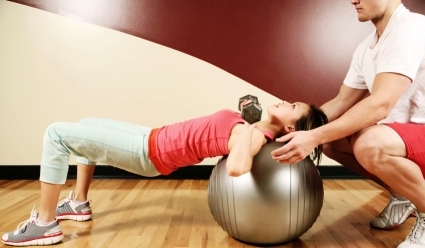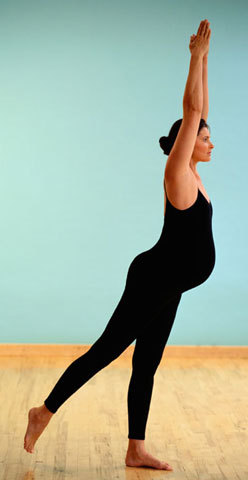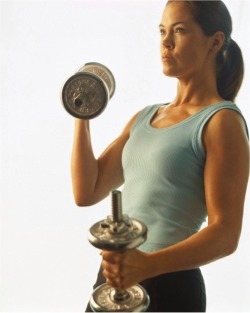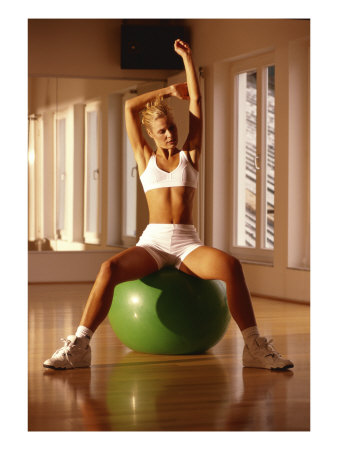 |
 |
 Are you motivated to get in shape? Do you want to get toned or
bulk up? Are you recovering from an injury but still need to exercise? Do you
want to improve your athletic performance? If you answered "yes" to
any of these questions, then you have adequate reasoning to hire a personal
trainer. While you can certainly accomplish all of these goals on your own,
there are some advantages to having a personal trainer that might improve the
quality of your fitness regimen. Are you motivated to get in shape? Do you want to get toned or
bulk up? Are you recovering from an injury but still need to exercise? Do you
want to improve your athletic performance? If you answered "yes" to
any of these questions, then you have adequate reasoning to hire a personal
trainer. While you can certainly accomplish all of these goals on your own,
there are some advantages to having a personal trainer that might improve the
quality of your fitness regimen.
Personal trainers usually give you:
- A fitness
evaluation. This is a series of agility tests, including cardiovascular,
flexibility, muscle strength and endurance. The evaluation will help the
trainer determine what kind of shape you are in, and how he or she needs to
design your workout program. Your trainer should ask about your health history,
medications, and experience with exercise.
- A
personalized exercise program designed specifically for you. There is no
one-size-fits-all approach to fitness training. Each person's needs and goals
are different, and a personal trainer will custom design a plan that
acknowledges both the shape you're in and the shape you want to be in.
- Supervised
exercise. A personal trainer will give you one-on-one, undivided attention to
make sure you are sticking to your program, using proper form and technique,
and that you are getting the most out of your workout without getting injured.
The benefits of your program will be explained to you and your trainer will
recognize when you've reached certain milestones.
- Motivation.
There's nothing like having a trainer give you words of encouragement
throughout your workout. This helps with the mental part of getting in
shape--attitude is everything! If you don't think you can do it, then you
won't
- Expertise.
Good personal trainers are experts in the field of exercise, nutrition, and motivation.
They are there to give you advice that extends beyond your time with them.
Listen to what they have to say about dieting and lifestyle modifications--a
good personal trainer is a fountain of knowledge!
|
|
 |
 |
 Exercise is an important part of staying healthy during your
pregnancy. Here are some tips: Exercise is an important part of staying healthy during your
pregnancy. Here are some tips:DO:
- Snack first. About 30 minutes to an hour before you start your exercise, eat
high-energy foods such as a fruit smoothie, cereal, banana, or bran muffin.
- Warm up and cool down. Take about 10 minutes to warm up before you exercise and
another 10 minutes to cool down afterward.
- Wear an athletic bra that will provide good support for your changing body, to
avoid any additional pain and tenderness.
- Wear breathable clothing that will keep you and your baby from
getting too hot. Try pairing cotton shorts with an oversize T-shirt. Also make
sure to wear supportive, comfortable shoes.
- Match the exercise to your body. Exercise is good for you, as long
as you take into account the current condition of your body.
- Stop if you feel tired, dizzy, or nauseous. Listen to your body.
If it wants to quit, then quit.
- Drink plenty of water. Drink two glasses of water about an
hour before you exercise, then a glass halfway through your workout, and
another glass when you're finished.
- Get your doctor's permission.
DON'T:
- Exercise if you become short of breath. You should be able to
carry on a conversation throughout your workout. If you're unable to speak
because you're gasping for air, then you're working
too hard.
- Exercise in extreme heat or humidity. Even a good sweat may not be
able to cool your body sufficiently. If you elevate the temperature inside your
body, it could endanger baby.
- Use a hot tub or sauna. The high temperatures can raise your core
temperature, which puts your baby at risk.
- Exercise while lying on your back after your third month. Your
uterus and baby can press down on major blood vessels, dangerously lowering
your blood pressure.
|
|
 |
|
Avocado salad made with
cucumber, carrots, cauliflower, and mushrooms is a tasty filling for pita bread,
and makes for a low fat, high energy lunch.
Prep Time: 20 minutes
Ingredients:
* 1 avocado, halved and peeled
* 1/2 cup chopped cucumber
* 1/2 cup chopped carrot
* 1/2 cup chopped cauliflower
* 1/2 cup sliced mushrooms
* 1/2 cup cubed low-fat Monterey Jack cheese
* 1/4 cup low-fat Italian dressing
* 4 whole wheat pita pockets
* 1 teaspoon lemon juice
* 1/2 cup chopped tomato
Preparation:
Dice half the avocado. Reserve other half.
Gently toss diced avocado, cucumber, carrot, cauliflower, mushrooms, and cheese
with Italian dressing.
Slit pita breads and separate halfway around by pulling edges apart to form a
pocket. Fill each with 1/4 of the mixture.
Mash remaining avocado with fork and stir in lemon juice and tomato. Spoon into
each sandwich.
Yield: 4 pocket sandwiches
|
|
 |
 |
Are you ready to get serious about building your muscles? Here are
8 tips involving diet, exercise, and lifestyle habits that are important if you
want to reach an anabolic state:
 Eat five to six small meals a day. Your body needs calories for
energy and effective workouts. By eating smaller meals more often, your caloric
intake will be just above your caloric expenditure, putting you in an anabolic
state. Eat five to six small meals a day. Your body needs calories for
energy and effective workouts. By eating smaller meals more often, your caloric
intake will be just above your caloric expenditure, putting you in an anabolic
state.
- Consume plenty of protein, and enough carbohydrates to fuel
exercise
- Consume healthy fats, or foods high in Omega-3 fatty acids.
Avocados, salmon, olive oil, walnuts, flax seeds, pecans, almonds, and pumpkin
are all good examples
- Eat a good pre-workout meal consisting of slow-burning
carbohydrates like whole-grain pasta or rice, and a serving of protein
- Eat a good post-workout meal to refuel your body--it should
consist of fast-burning carbohydrates and protein
- Drink plenty of water--all day, every day. Sodas, coffee, juices,
and Gatorade are no substitutes for the most important nutrient of all!
- Allow your mind and body plenty of rest and recovery time. Take one or
two days off per week from working out
|
|
|
 |
|
In This Issue:
|
|
 |
|
Training Updates
|
Your Name

800-123-4567
my website
|

|
|
Balance Ball Tips & Tricks
|
|

The balance ball presents
endless exercise possibilities. Here are a few that concentrate on the abs, the
back, and the buttocks:
The Ab Roll
Place your hands on the ball in front of you, arms parallel. Pulling your belly
button towards your spine and tightening your torso, slowly roll forward,
rolling the ball out as far as you can without arching or straining your back.
Push the elbows into the ball and squeeze the abs to pull the body back to
start. Avoid this move if you have back problems.
The Back Extender
Facing the ball, position the ball under your hips and lower torso with the
knees straight or bent. With hands behind your head or back, slowly roll down
the ball. Lift your chest off the ball, bringing your shoulders up until your
body is in a straight line. Make sure your head, neck, shoulders, and back are
in alignment, and your abs are pulled in. Be careful not to hyper-extend your
back.
Glute Lift
Lie on the ball with the head, neck, and shoulders supported, knees bent, and the
body in a table-top position. Lower the hips towards the floor without rolling
on the ball. Squeeze your buttocks, raising your hips until your body is in a
straight line like a bridge. Hold weights on the hips for added intensity and
make sure you press through the heels
|

|
|
Post Workout Routines for Relaxation
|
You've just finished a vigorous workout--whether it was a
5-mile jog around the lake or an afternoon at the gym. Now, it's time to
refuel, relax, and rejuvenate.
Need some ideas for a pleasurable post-workout recovery session that doesn't
involve flopping down on the couch? Well, if you're already at the gym, take
advantage of the sauna and steam room, or even massage services, if they're
offered. If you're at home, draw yourself a warm bath with aromatherapy oils
(lavender for relaxation and peppermint for muscle fatigue) to help relieve any
soreness. You could even light a candle and play some soft music for the
ultimate calming experience.
Make yourself a refreshing fruit smoothie to put some calories back into your
body and help your muscles recover after a workout. If you're really sore, put
some ice cubes into a freezer bag, wrap that in a dry towel, and apply to sore
areas for a few minutes at a time.
Another way to prevent soreness the next day is to grab a yoga mat and do a
nice slow stretch before going to bed. This will help you have a more restful
sleep, in addition to reducing soreness. You may also want to try some deep
breathing or meditation exercises to help you settle into a state of complete
mental relaxation, which will in turn help your body to relax.
|
|
 |
